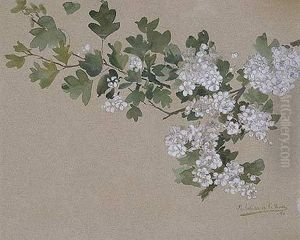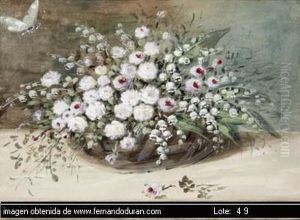Maria Luisa De La Riva Y Callol De Munoz Paintings
María Luisa de la Riva y Callol de Muñoz was a Spanish painter born on August 8, 1865, in Molins de Rei, Barcelona. She grew up during a period when the art scene in Spain was vibrant, with various styles and movements emerging. De la Riva is often associated with romantic landscape and genre scenes, reflecting the influence of her Spanish heritage as well as the broader European art movements of her time.
Educated initially by her father, who was also a painter, María Luisa de la Riva showed artistic talent from a young age. She furthered her education at the School of Fine Arts of Barcelona, where she was one of the few female students. Her progress was such that she was awarded a scholarship to study in Rome, a rare honor for a woman at that time. In Italy, she was exposed to the classical tradition and the Renaissance masters, which would have a lasting impact on her style.
After her studies, she returned to Spain and married the Spanish politician and academic Rafael Muñoz. Despite the conventional expectations of women in her era, de la Riva maintained her professional career alongside her role as a wife and later a mother. She exhibited her works at various important exhibitions, including the National Exhibition of Fine Arts in Madrid, where she received a third-place medal in 1892. De la Riva's paintings also gained recognition abroad; she participated in international expositions, such as the World's Columbian Exposition in Chicago in 1893.
Her work typically features evocative landscapes, often imbued with a poetic or sentimental quality. She also painted portraits and intimate domestic scenes, which reveal an insightful observation of character and a sensitive approach to light and color. Over time, her brushwork became looser, and her color palette lightened, showing the influence of Impressionism on her later work.
María Luisa de la Riva passed away on October 15, 1926, in Madrid. Her artistic legacy is a testament to her skill and perseverance in a predominantly male-dominated art world. Today, her paintings can be found in museums and private collections, where they continue to be appreciated for their beauty and historical significance.

